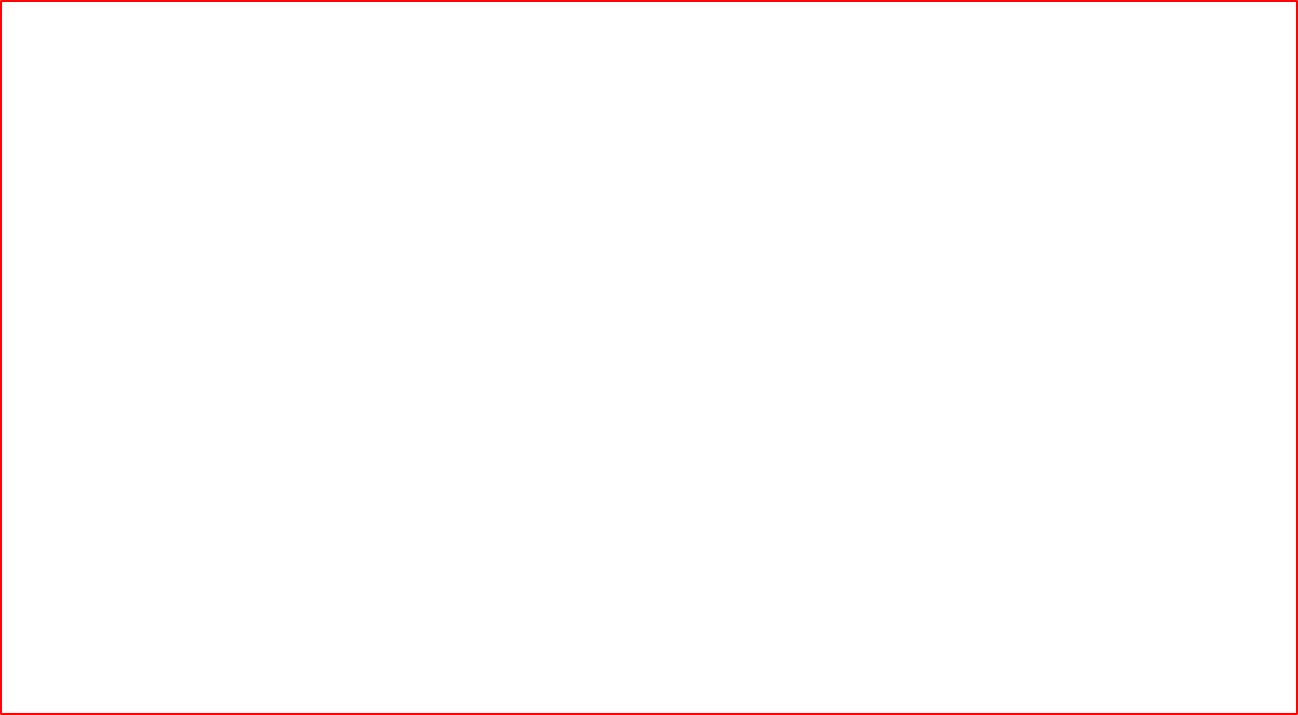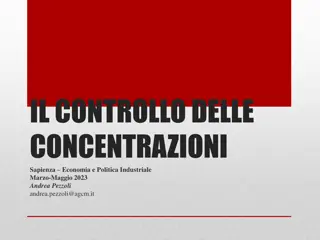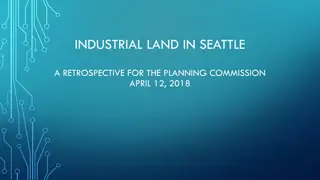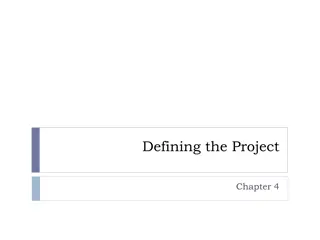Overview of Industrial Economics: Scope, Evolution, and Challenges
Industrial economics delves into economic issues of firms and industries, exploring their interactions with society. This chapter discusses the meaning and scope of industrial economics, its historical evolution from classical to contemporary theories, traditional concerns like firm performance and market structures, and the role of government. The subject has evolved over the years, incorporating new ideas and empirical findings. Decision-making problems in industries are examined through the lens of economics as the study of human behavior in allocating scarce resources.
Download Presentation

Please find below an Image/Link to download the presentation.
The content on the website is provided AS IS for your information and personal use only. It may not be sold, licensed, or shared on other websites without obtaining consent from the author. Download presentation by click this link. If you encounter any issues during the download, it is possible that the publisher has removed the file from their server.
E N D
Presentation Transcript
CHAPTER ONE INTRODUCTION Chapter objectives: After reading this chapter you must be able to know The meaning and scope of industrial economics The definitions and elementary description of some basic concepts used in industrial economics The paradigm of SCP The framework for the study of industrial economics Compiled by: Abdi T. 1
Definition and Scope of Industrial Economics What is industrial economics? It is one of the disciplines in economics that deals with the economic problems of firms and industries, and their relationship with society. It is also called: Economics of Industry Industry and Trade Industrial Organisation and Policy Commerce and Business Economics and so on. Compiled by: Abdi T. 2
1.0. Overview on historical Evolution of Industrial Economics The early theory of the firm which we might regard as the mother of the contemporary industrial economics was born as at this stage as an integral part of the classical economics. Many of the issues in this area of economics date back to Adam Smith in the eighteenth century. More recently, Cournot in the first half, and Marshall in the 2nd half of the nineteenth century laid foundations that which , remain appropriate concerns in industrial economics of today. Compiled by: Abdi T. 3
There have been two major traditional concerns of industrial economics. First, there has been a focus on the functioning of firms, and their performance; the determinants and consequences of different market structures , and the relationship between behavior and performance of firms) and the market structure within which firms operate. Second, the role of government in influencing the organization of industry. Compiled by: Abdi T. 4
Although difficult to know the true beginning of industrial economics because of non-availability of data, it has come up to the present stage mainly during the last 40 to 50 years. The subject has not yet grown to its maturity. In recent years, industrial economics has changed dramatically. Theories have been extended & developed, partly in response to new ideas such as commitment, to new empirical findings and partly to the arrival of new tools such as computer simulations. Compiled by: Abdi T. 5
How decision-making problems arise in industries? To answer this question, we have to go back to the core of Economics. Economics is the science that studies human behavior as a relationship between ends and scarce means that have alternative uses. As implicit in this definition, an economic problem arises because of scarcity of means and their alternative uses in relation to the needs of an individual or a group or society as a whole. Compiled by: Abdi T. 6
For example, the income of a consumer is generally limited but his/her wants are unlimited. In this situation he/she has to adopt some criterion to achieve maximum gain from his/her limited income. This is the problem of utility maximization in the theory of consumer behavior. Similarly, for a producer, the resources like land, raw materials, labor, capital, etc., are scarce. Compiled by: Abdi T. 7
Given such scarcity, the producer has to take decisions about production and distribution. There are several basic issues on which the producer will be taking decisions such as: what commodities he/she should produce, what should be the level output of each input, what type of technology he/she should adopt, where should he/she produce the goods, Compiled by: Abdi T. 8
what should be the size of his/her factory, what price he/she should charge, how much wages should pay, how much he/she should spend on advertisement, should he/she borrow from banks or elsewhere, etc All such decisions explain the producer's behavior in the different market situations, which we endeavor to study in industrial economics. Compiled by: Abdi T. 9
In microeconomics also we study producers behavior in relation to scarcity of resources. Because of this fact, some economists would regard industrial economics as being primarily an elaboration of, and development from, the traditional theory of the firm taught under microeconomics. Industrial economics is best defined as the application of micro economic theory to the analysis of firms, markets and industries. Compiled by: Abdi T. 10
Stigler (1968) argues that industrial economics does not really exist as a separate discipline, that it is simply differentiated microeconomics. But this misses some points. The distinction arises from the overriding emphasis, in industrial economics, on empirical work and on implications for policy. Compiled by: Abdi T. 11
What makes industrial economics different from microeconomics? Of course to view industrial economics as a development of microeconomics understandable. Both are concerned with the economic aspects of firms and industries seeking to analyses their behavior implications. However, there are some differences between the two. is quite and draw normative Compiled by: Abdi T. 12
Microeconomics is a formal, deductive and abstract discipline where as Industrial economics on the other hand is less formal, more inductive in nature. Microeconomics assumes profit maximization as the goal of the firm given constraints where as Industrial economics does not believe in single goal of profit maximization. Microeconomics, being abstract, does not go into operational details of production, distribution and other aspects of the firms and industries where as Industrial economics does go into the depth of such details. Compiled by: Abdi T. 13
Public policy implications are taken care of in industrial economics but microeconomics may shun them if necessary. industrial economics with the concern of decision- making in an industry from micro angle, but it has macro dimension also. For a society as a whole the resources for production are scarce just as in the case of a producer. Compiled by: Abdi T. 14
With scarce resources, the problem exists to produce varieties of goods and services in-the current period and in future also. What goods should be produced: consumer or capital? If capital good are preferred, then the series of problems faced by the society may be: what types of capital goods; what type of factory (large vs. small scale); where to produce (locational problem); how to distribute them; etc. These are the questions which have been posed earlier for an individual producer also. But, here we have to examine them from the social angle. Compiled by: Abdi T. 15
The term industrial organization is commonly viewed as synonymous with industrial economics. But,Carlsson (1989) made clear distinction between them. He reasons that the main concern of industrial organization has become the structure of industries at a particular point of time. By contrast, industrial economics encompasses both industrial organization and industrial dynamics. Industrial dynamics is primarily concerned with the evolution of industry as a process in time both at the macro level, the sector or industry level, and the firm level. Compiled by: Abdi T. 16
It differs from industrial organization in that its main focus of attention can vary from the firm, to relationships between firms, to the links between microeconomics and the macro economy. When the economist turns the attention to industrial dynamics investigation is widened . the area of Compiled by: Abdi T. 17
Conclusion: Industrial economics is predominantly an empirical discipline having micro and macro aspects. It has a strong microeconomics. It provides useful applications for industrial management and public policies. theoretical base of Compiled by: Abdi T. 18
There are two broad elements in industrial economics. Descriptive element Analytical part Descriptive Element: is concerned with the information content of the subject. It would provide industrialist or businessman full information regarding: the availability of natural resources industrial climate in the country situation of the infrastructure including lines of traffic supplies of factors of production, trade and commercial policies of the governments, and the degree of competition in the business in which it operates. Compiled by: Abdi T. 19
In short, it deals with the information about the competitors, natural resources and factors of production and government rules and regulations related to the concerned industry. Analytical element:is concerned with business policy and decision making. market analysis Pricing choice of techniques location of plants investment planning hiring and firing of labour financial decisions product diversification and so on. Compiled by: Abdi T. 20
Analytical element : is a vital part of the subject and much of the received theory of industrial economics is concerned with this. However, this does not mean that the first element, i.e., descriptive industrial economics, is less important. NB. The two elements are interdependent, since without adequate information no one can take proper decision about any aspect of business Compiled by: Abdi T. 21
While the descriptive element of industrial economics is concerned with the information content of the subject, the analytical element is concerned with the business policy and decision making. Compiled by: Abdi T. 22
Moreover, industrial economics: analyses industries, markets, and the behaviour of firms within those markets. It deals with supply side economics. Thus, it is concerned with the economic problems of the firms and their economic behaviour in utilising economic resources at their disposal. The interdependence between firms within markets and the links that exist between market conditions and firm s performance Compiled by: Abdi T. 23
Industrial Economics addresses the basic question of: what to produce for whom to produce and how to produce in the context of industries or firms Industries face such problems because resources are scarce and hence the industrialist has to take decisions about production and distributions of goods and/or services as they cannot produce everything they want to produce at single firm level or at higher aggregate level of the economy. Compiled by: Abdi T. 24
The Rationale for Studying Industrial Economics i. It is instrumental to the formulation and implementation of industrial policies that are essential for sustainable development of a nation. For example, it helps us: to choose between private and public enterprises to design strategies to promote investment in industrial sector to regulate and/or deregulate public utility industries It also assists policy makers as how they can stimulate technological progress through patent rights and subsidies. Compiled by: Abdi T. 25
ii. Studying industrial economics is useful for generating research questions such as: why do some firms advertise their products while others do not? Why do some firms expand while others contract or keep their size constant? Are barriers to entry more serious in some branches of industry than in others? The questions are essential for further research and development and hence deserve attention. Compiled by: Abdi T. 26
1.2. Some Basic Concepts in the study of Industrial Economics i. The Firm A firm is an organization owned by one or jointly by a few or many individuals which is engaged in productive activity of any kind for the sake of profit or some other well-defined aim. Most of the firms owned by private individuals in manufacturing trade and services will aspire for profits but there may be some other such as government companies where profit motivation will be secondary or missing altogether. Compiled by: Abdi T. 27
ii. The industry The conventional definition of the term industry is a group of firms producing a single homogeneous product and selling it in a common market. However, the restriction of a single homogeneous product is not met in practice. Most of the firms produce many outputs which may or may not be substitutable for each other. In this situation, the conventional operational sense. definition has no Compiled by: Abdi T. 28
A better approach to define the industry is to call it a group of sellers or of close substitute outputs who supply to a common group of buyers . In other words, we may take it in simpler terms as a group of firms producing closely substitute goods for a common group of buyers. In the terminology of the monopolistic competition we are essentially talking about the product group" as a substitute word for the industry. Compiled by: Abdi T. 29
iii. The Market This is defined as a closely interrelated group of sellers and buyers for a commodity. The term is not equivalent to the industry since in the latter case we are looking only at the seller s side of the market. By including the buyer's side, the term becomes more comprehensive connoting the composition of the buyers and their geographical location along with the industry. A heterogeneous group of closely substitute goods will have a market, but there may be markets within the market for every homogeneous good. Compiled by: Abdi T. 30
Contestable market: is a market where barriers to entry and exit, not market structure, determine price and output decisions and a competitive price is set. It is a market in which competitive outcomes can be observed. Its fundamental feature is low barriers to entry and exit; A perfectly contestable market would have no barriers to entry or exit. Compiled by: Abdi T. 31
iv. Market power Market power- refers to the influence that any particular buyer or seller can exercise over the price of a product. It indicates the degree to which a business firm is able to earn larger than normal profits. Market structures range from highly competitive, in which there are so many buyers or sellers that none can influence the market price, to the other extreme in which a single buyer or seller faces no competition and therefore wields great market power. Market power is inversely related to both the degree of competition in the market and the ease of entry and exit. Compiled by: Abdi T. 32
1.3.Approaches to Industrial Economics 1.3.1.The Market Structure-Conduct- Performance paradigm (SCP paradigm) Joe Bain and Edward Mason developed the concept Structure-Conduct- paradigm in 1936, dealing with the pricing policies of large-scale enterprises. It is also called Harvard tradition According to this paradigm, there is a priori relationship between the three concepts of industrial economics, market structure, market conduct and market performance. Performance Compiled by: Abdi T. 33
The link between these three structure of an industry determines or strongly influences the crucial aspects of its market conduct which in turn directly or indirectly determines certain important dimensions of its performance. This link gives us the basic framework for the study of the economic behaviour of the firms and industry in the market. As per this paradigm, the industrial structure, which is exogenously given, determines the conduct of firms and the performance of the industry. is that market Compiled by: Abdi T. 34
SCP approach state the unidirectional and linear relationship variables: between the three Basic Condition Structure Conduct Performance Functionally, therelationship on which the Harvard Tradition of the SCP paradigm is based is given as: P = (C) and, C= (S). Compiled by: Abdi T. 35
Basic Conditions The concept of the basic conditions operates on both sides of the market, supply and demand. On the demand side, the basic condition includes: the size of the market the growth of the market as well as its dependence on seasons and the business cycle the elasticity of demand and the availability of substitutes are also among the basic demand factors acting as the basic condition. Compiled by: Abdi T. 36
On the supply side: the basic condition encompasses the nature of relevant technology-divisible or not high or low elasticity of input substitution; the durability of the product, business attitudes, the value-to-weight ratio, location and ownership of essential raw materials number and location of firms, distribution, advertisement, marketing degree of work force unionisation the legal and social factors such as regulatory framework and availability of vital inputs may be included. Compiled by: Abdi T. 37
Jointly, there are public policies that affect both the supply and demand sides. These include: taxes and subsidies international trade rules regulation and antitrust laws and price controls Compiled by: Abdi T. 38
Market Structure Market structure refers to how the different sellers and buyers are linked together. The major elements of market structure describe ways in which markets depart from the conditions that describe perfect competition. Market structure has certain basic aspects; internal aspects (the number and size of buyers and sellers) and External aspects (the conditions of entry and exit) To understand the market structure, one needs to be first familiarised with the following concepts: Compiled by: Abdi T. 39
The degree of seller concentration: this refers to the number and size distribution of firms producing a particular commodity or types of commodities in a market. In perfectly competitive market model, we assume that there are very large number of buyers and sellers, standardized product, free entry, free exit and complete and perfect knowledge. Thus, no single firm is able to influence the price of the product in such a market. A competitive industry will in the long run supply a product at a price equal to its average cost and marginal cost. That is, P = AC=MC. Compiled by: Abdi T. 40
In contrast, a monopolised market is supplied by a single seller, who is able to restrict output and hold the price above the marginal cost of production i.e. P > MC. There is only one seller in the market with zero or almost negligible cross elasticity of demand for its products. In this case, there is full market power over price and quantity decisions. This implies that from the view point of the society, imperfect markets such as Monopoly are inefficient unlike the perfect competition model. Compiled by: Abdi T. 41
The degree of buyer concentration: this shows the number and size distribution of buyers of the commodities in the market. The essence of the matter is that concentration of power in one part of a market will evoke balancing concentrations of power in other parts of the market. When a few large buyers bargain with a few large sellers, it will be more difficult for sellers to hold the price above the cost, keeping all other factors constant. Compiled by: Abdi T. 42
The degree of product differentiation: this shows the difference in the products of different firms in the market. In competitive market, rivals sell a homogeneous product. This is never the case in the real world. Products are always differentiated in some way. As differentiation increases, the products of different suppliers become poorer substitutes for one another and hence the producer becomes more and more like a monopolist. This would increase the power of the producer to control its selling price. Thus, we can say that there is a trade-off between market power the power to control prices and product variety. More variety imply more power to control prices so likely to get P > Mc Compiled by: Abdi T. 43
The condition of entry to or exit from the market: this shows the relative ease with which new firms can join the category of sellers in the market or leave it. The role of entry is important in that with entry even the most complete monopoly is open to competition from new entrants. Entry conditions explain the number and size distribution of firms that operate in a market. So entry condition affects conduct and performance in its own right. Compiled by: Abdi T. 44
Other related aspects of market structure relate to The extent to which firms one vertically integrated back to their sources of supply or forward to the final markets, The degree of diversification of individual firms, Technological, geographical and institutional factors present in the market and conditioning the behavior and performance of the firms. Compiled by: Abdi T. 45
Market Conduct Market Conduct refers to the pattern of behaviour that firms follow in adopting or adjusting to the market in which they operate to achieve well defined goal(s). That is it is all about: pricing and output determination investment, marketing and product design by a firm or industry Compiled by: Abdi T. 46
Given the market conditions and the goals to be pursued, the firm will be acting alone or jointly to decide about: the price levels for the products the types of products and their quantities their design and quality standards advertisements and so on. Generally, market conduct refers to: the decisions, policies and strategies of firms and or producers with regards to pricing behaviour and or policies, investment, Research and Development and various forms of strategic alliances with other firms. Compiled by: Abdi T. 47
The entire process of reacting to the market situation in pursuit of the desired goal is called the marketconduct . Market conduct is a subject that becomes interesting only when competition is imperfect. Under perfect competition, a firm can sell all its products at the market price. In such circumstances, a firm has no incentive to advertise, to react to what rivals do, or to attempt to discourage entry. When the competition is imperfect, however, the behaviour or conduct of the firm is quite different. Compiled by: Abdi T. 48
In general, market conduct includes the pattern of behavior followed by firms in the industry when adapting to a particular market situation. It includes: i. Pricing behaviors of the firm or group of firms:- This includes a consideration of whether price charged tend to maximize individual profits, whether collusive practices in use tend to result in maximum group profits or whether price discrimination is followed. ii. Product policy of the firm or group of firms - For example, is product design frequently changed? Is product quality consistent or variable? What variety of products is made available? Compiled by: Abdi T. 49
iii. Sales promotion and advertising policy of the firm or group of firms how important are sales promotions and advertising in the firm or industry s market policy? How is the volume of this activity determined? iv.Research, development, and innovation strategies employed in the firm or group- how substantial are expenditures for these purposes? To what extent is new technology available to smaller firms? v. Legal tactics used by the firm or group- Legal actions to gain competitive advantage. Are patent and trade mark rights strictly enforced or defended? Are patent rights licensed to others at fair rates? Compiled by: Abdi T. 50




























